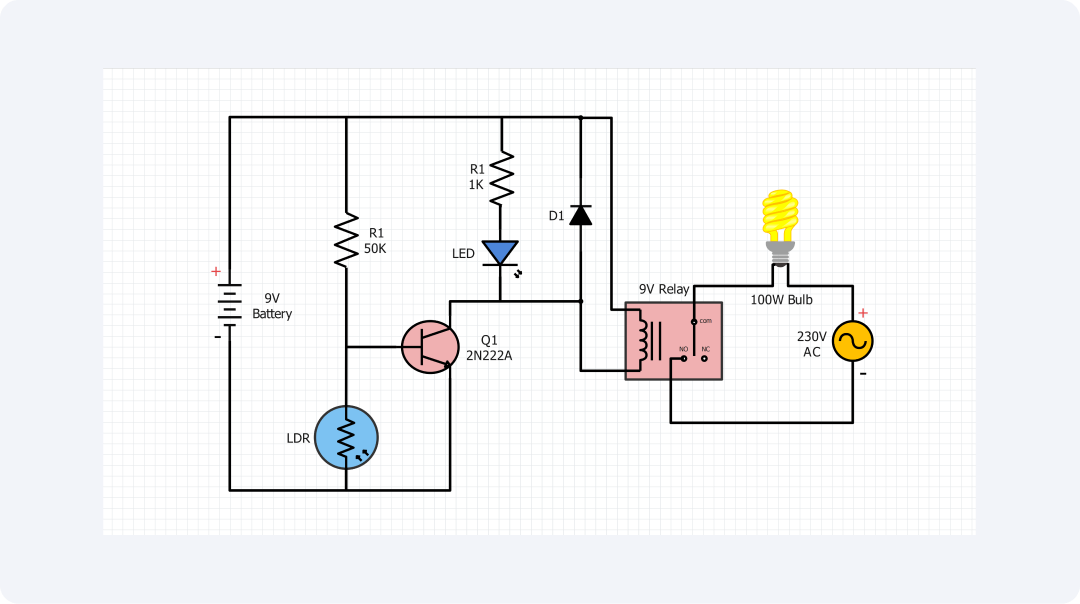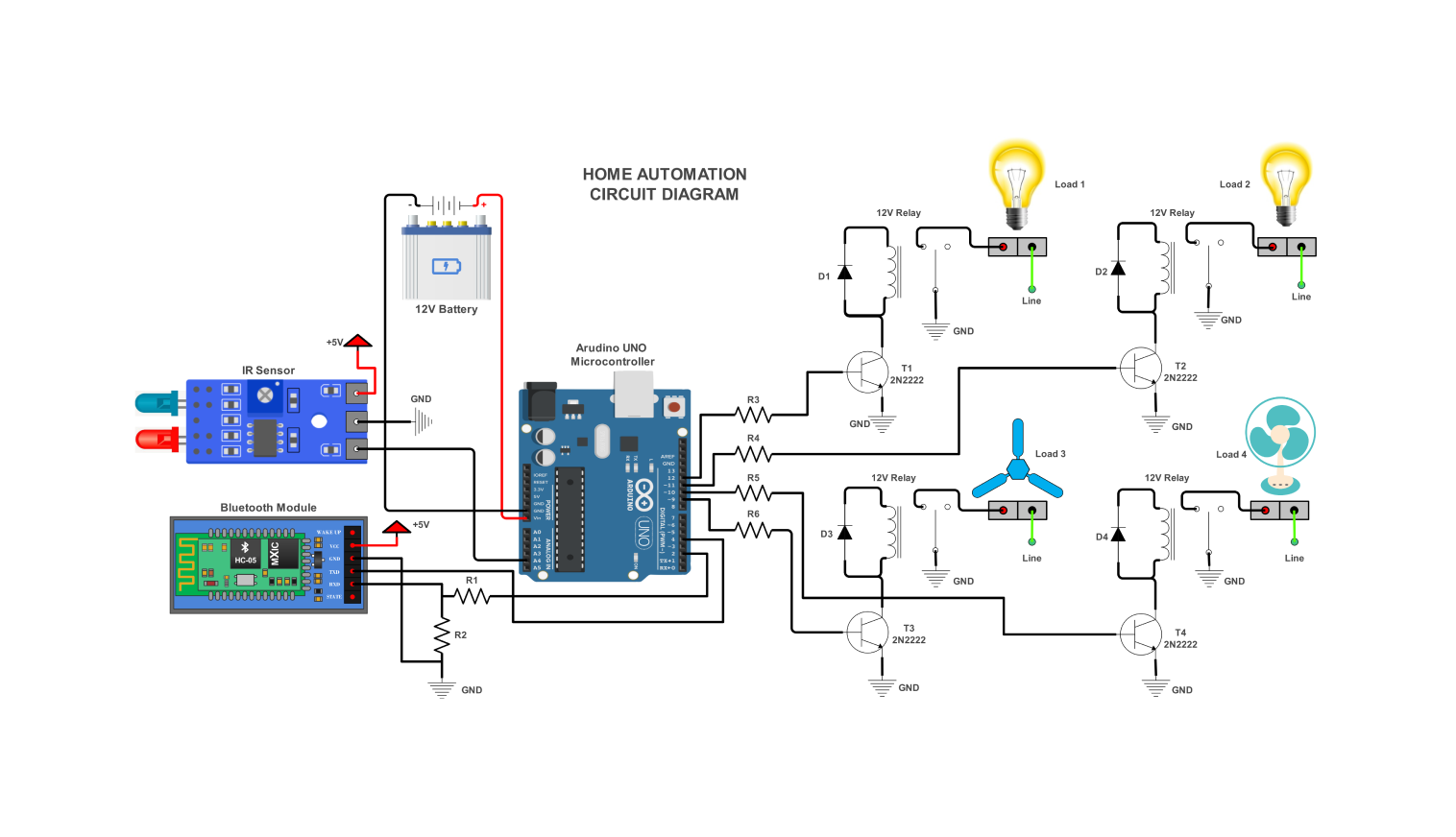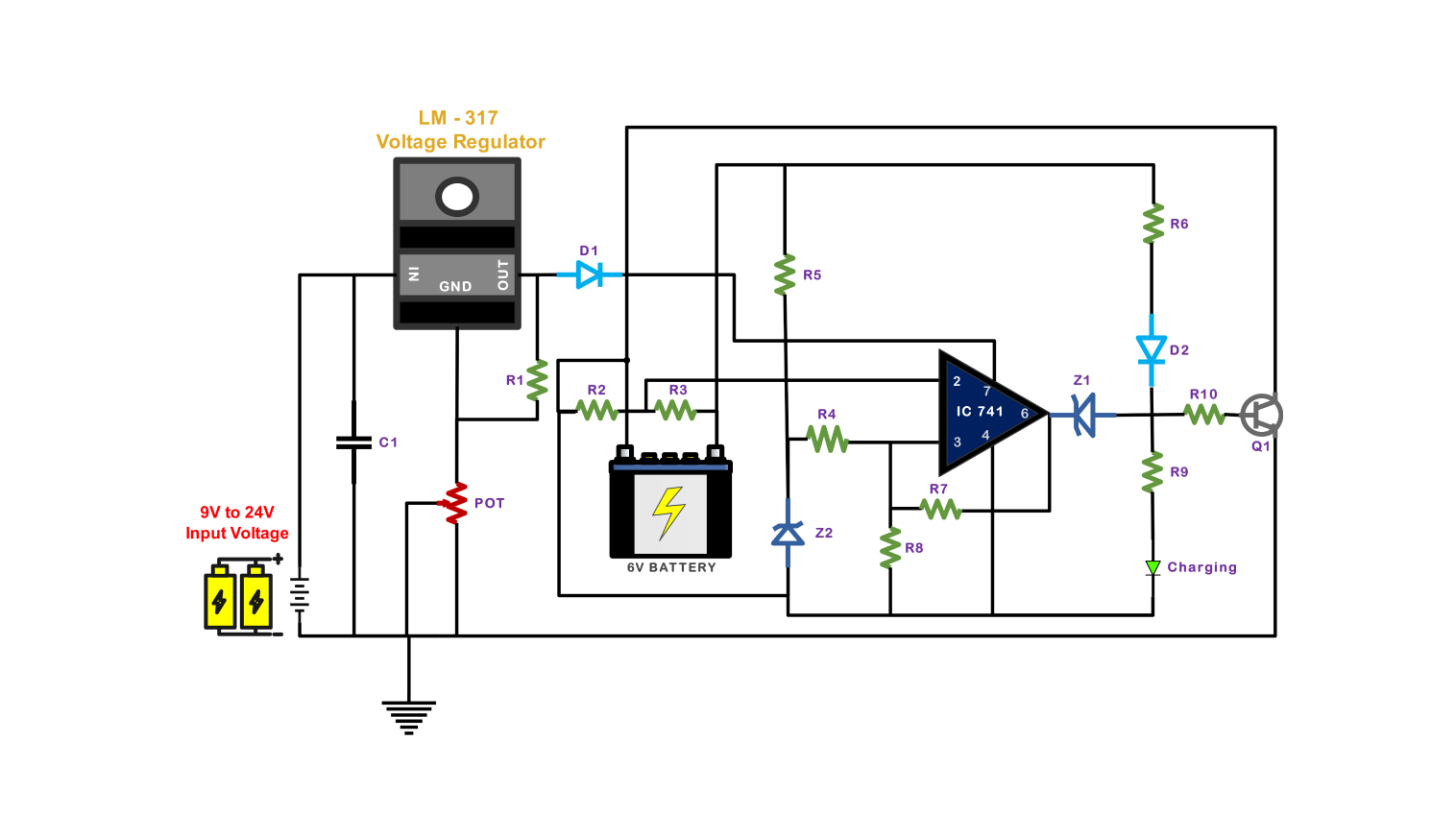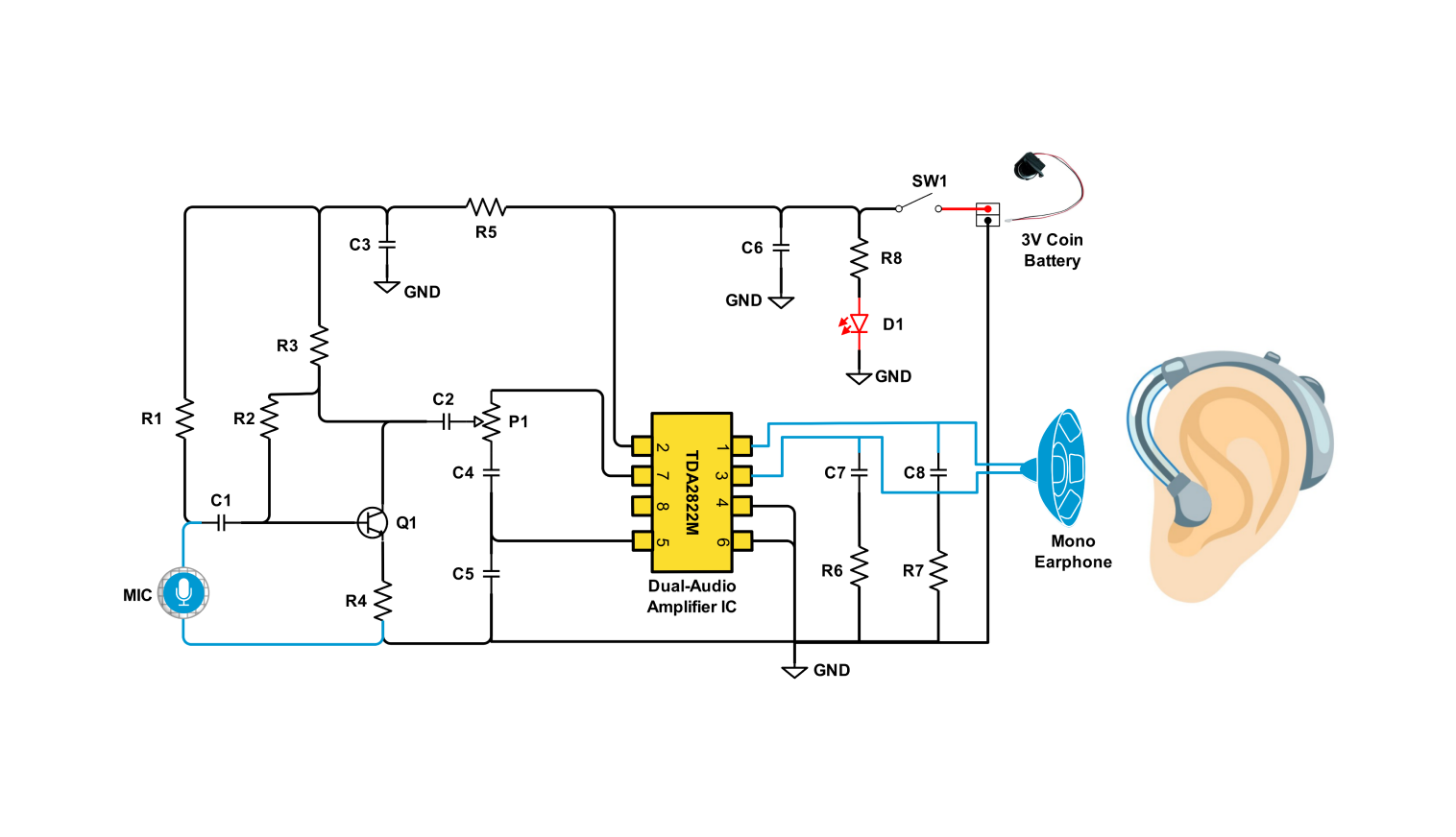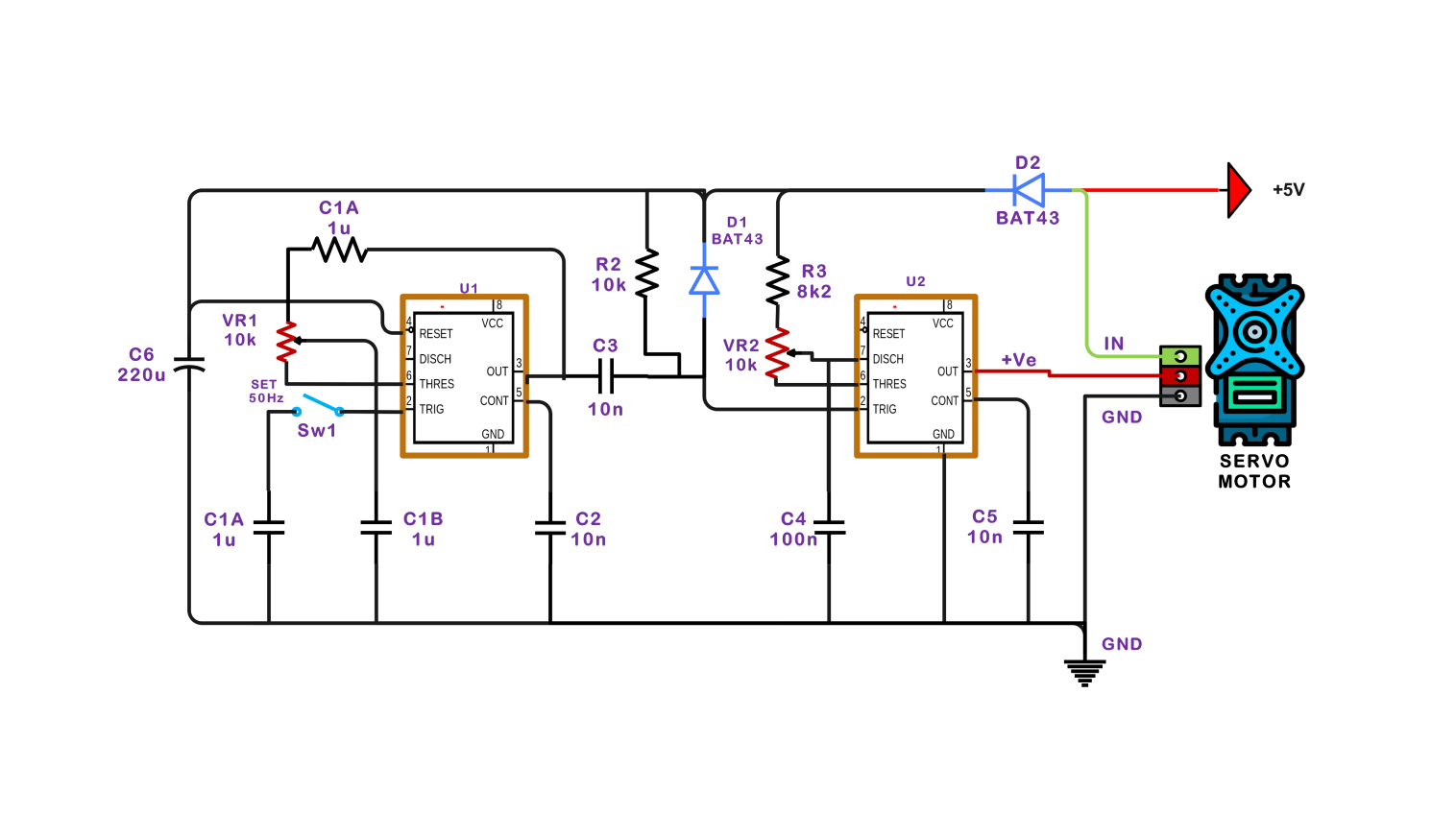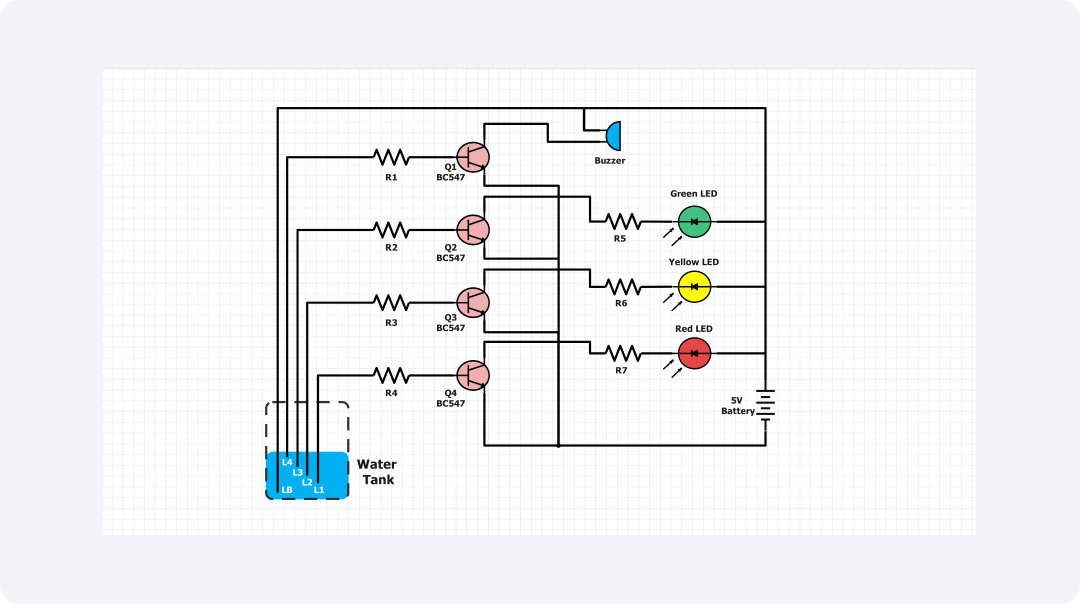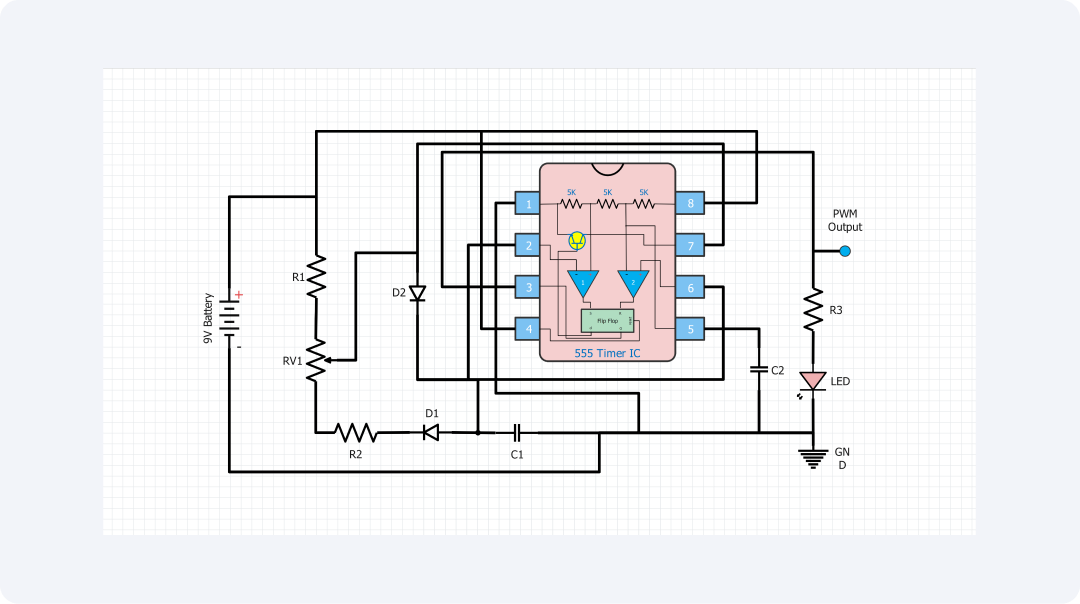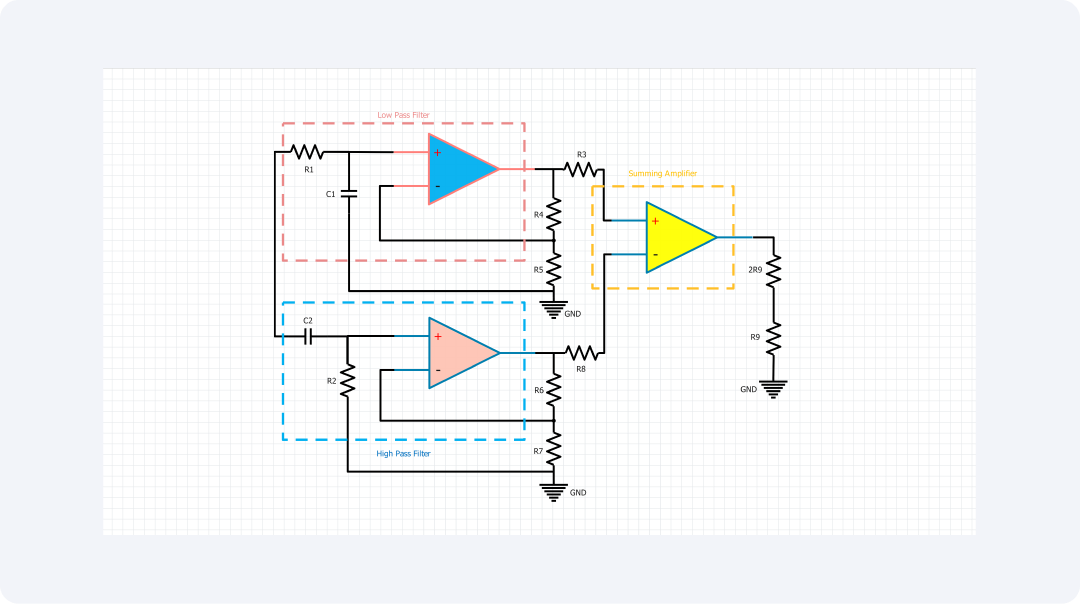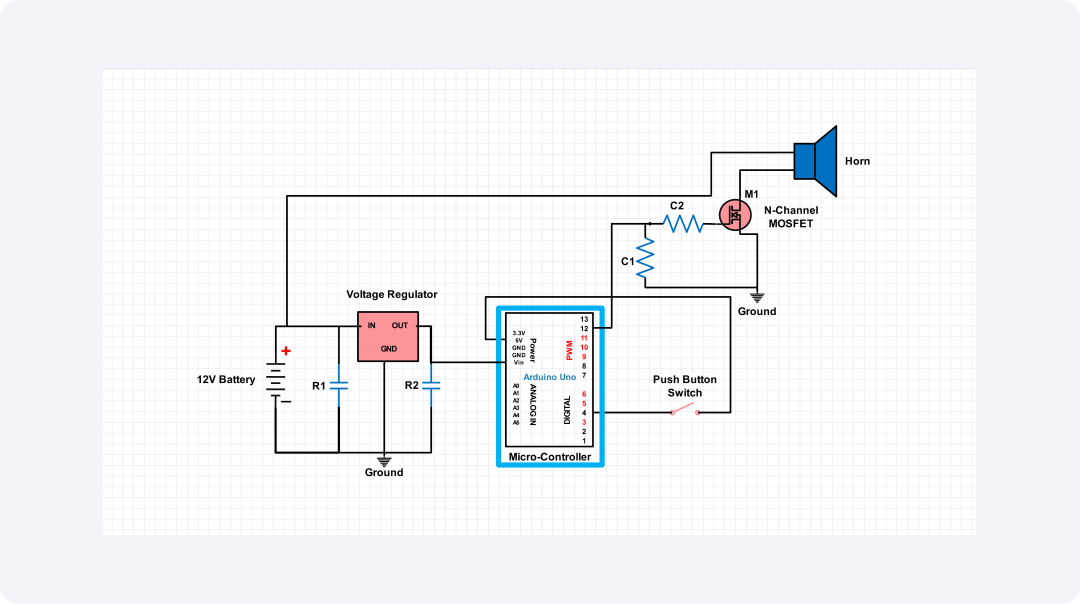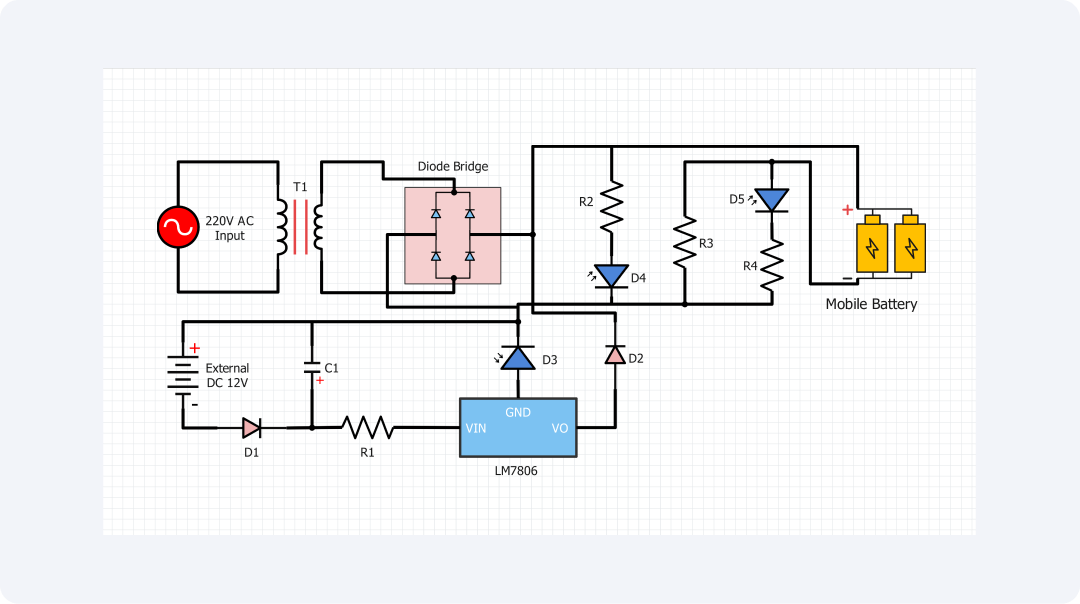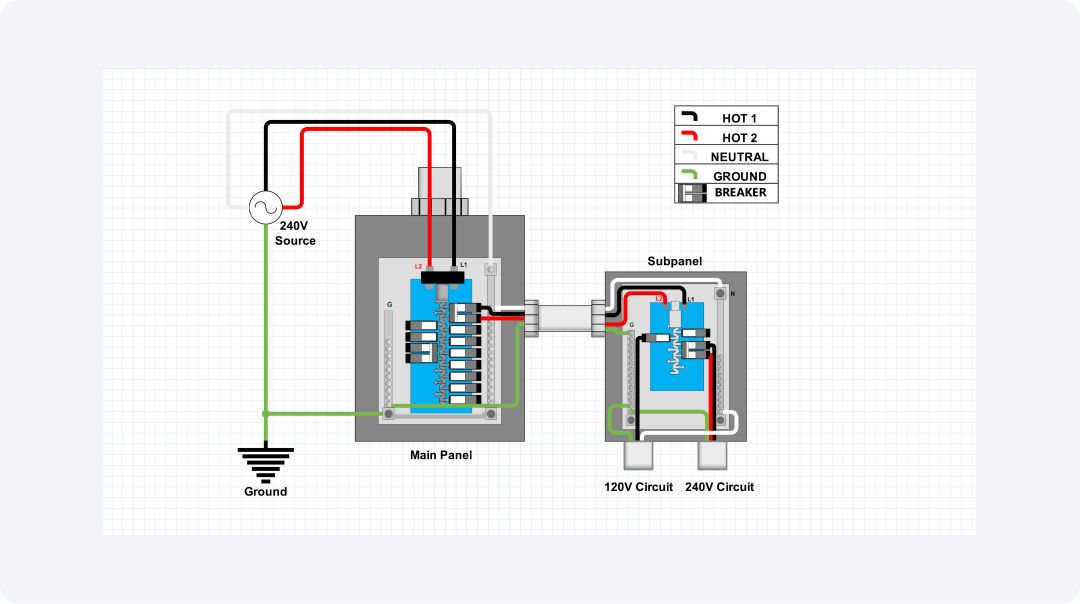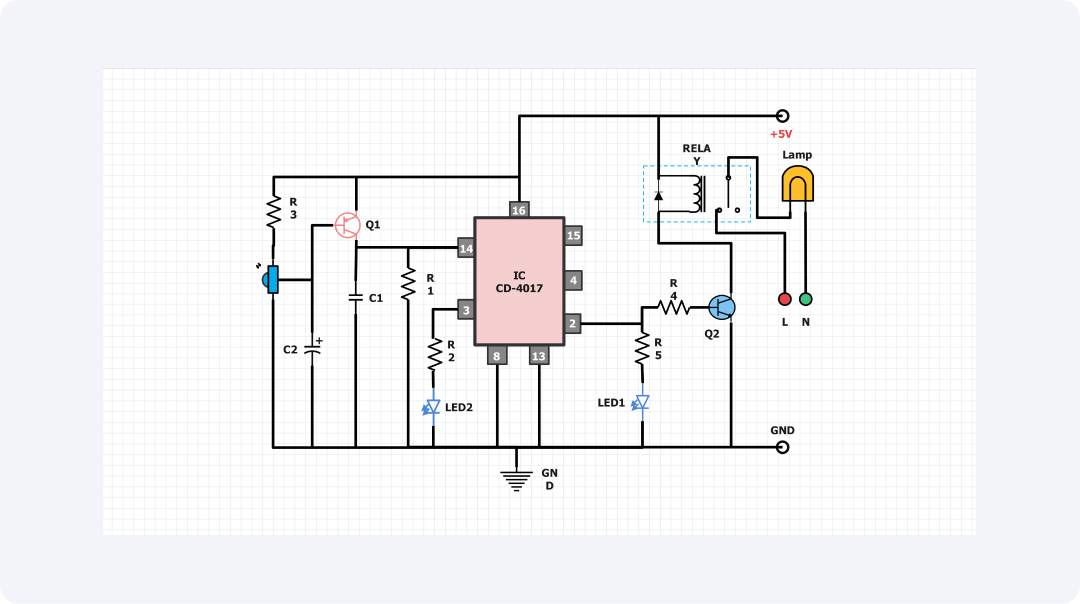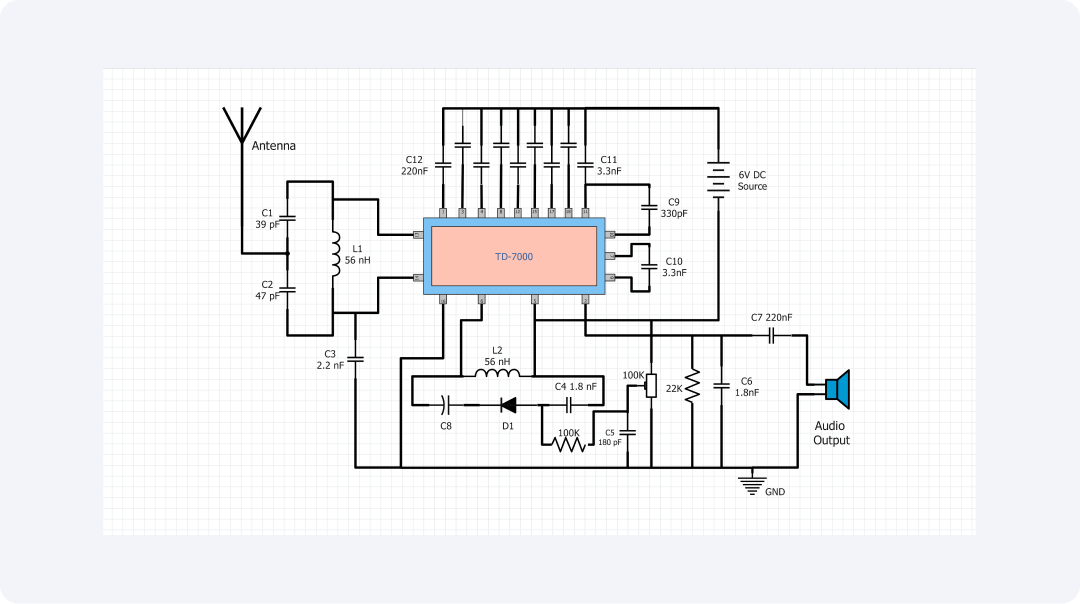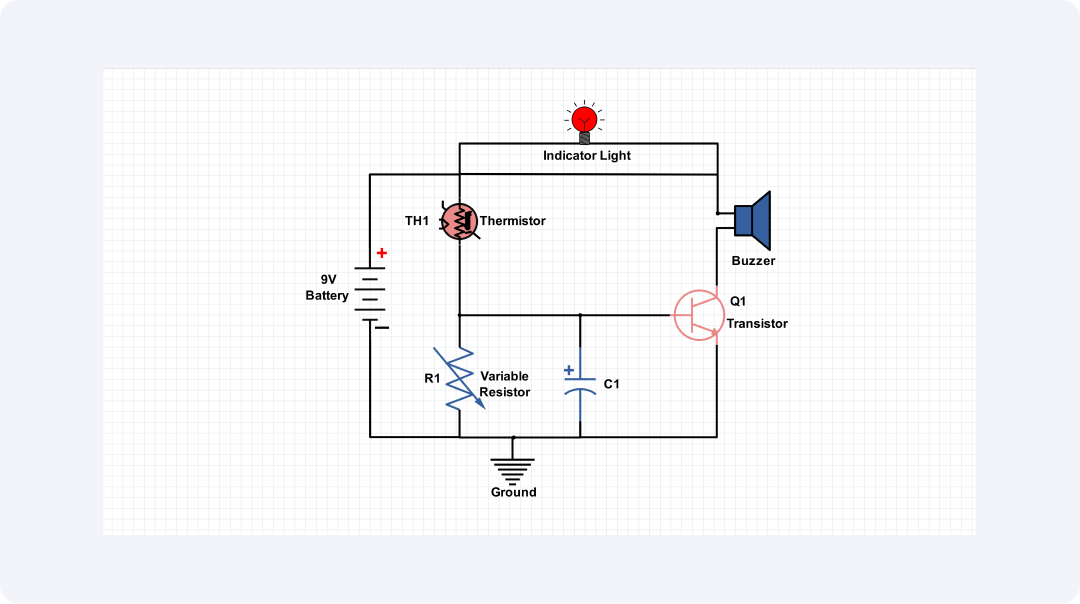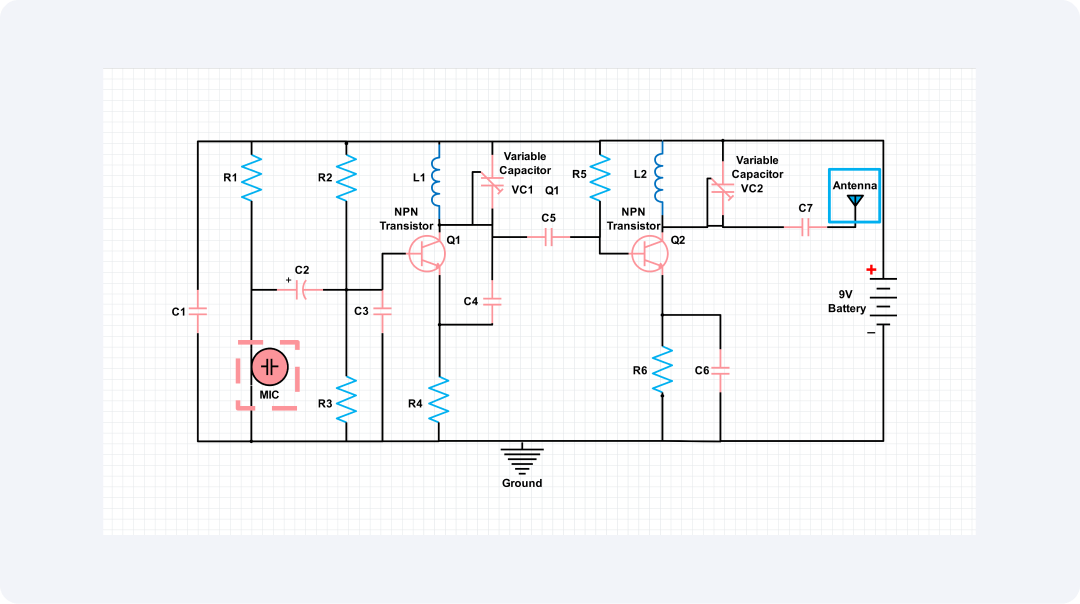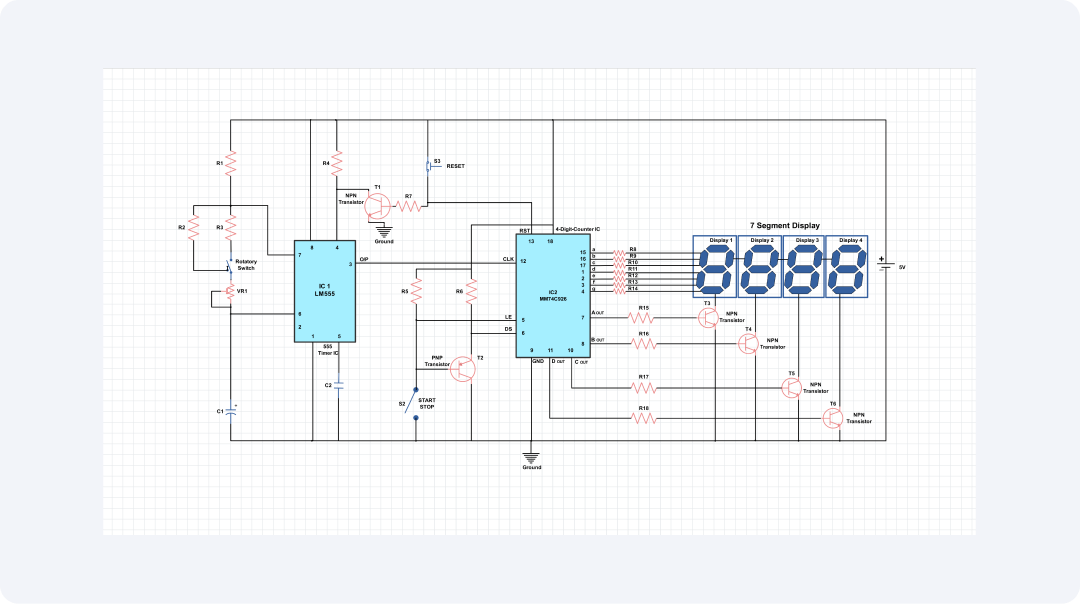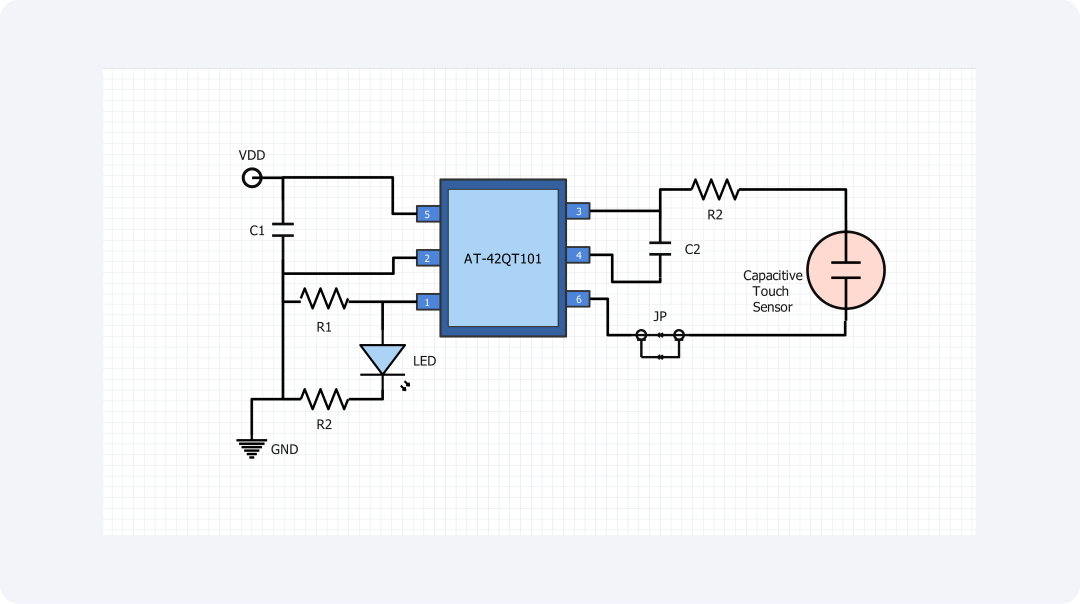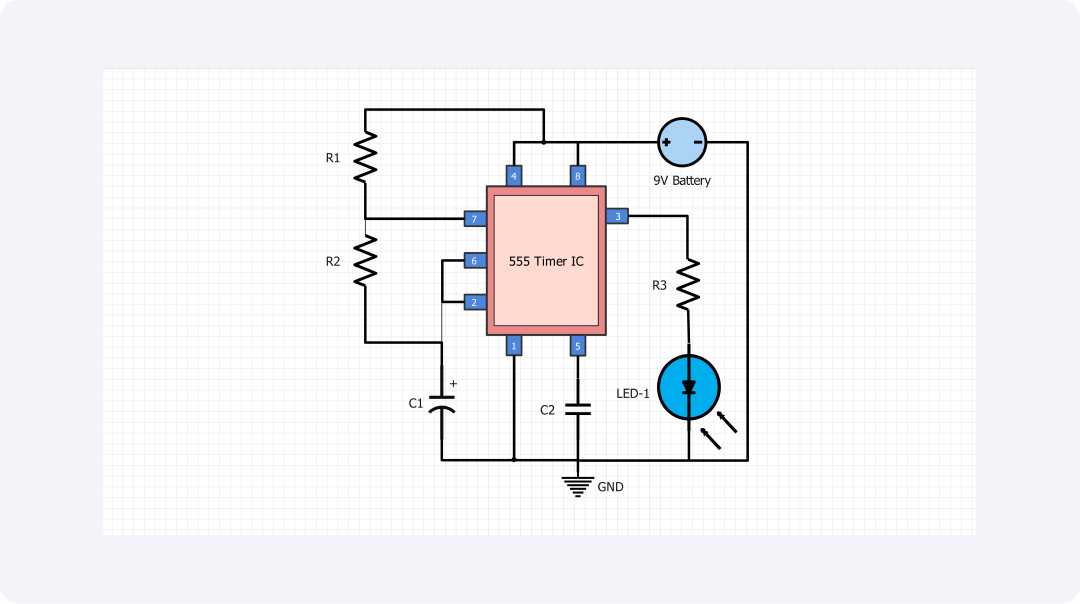- Templates
- Circuit diagram templates
- Dark sensor circuit diagram
About this dark sensor circuit diagram
This circuit diagram reveals one of the most basic but efficient dark sensor circuits that may be used to switch on a light when it is getting dark. The circuit uses a light-dependent resistor (LDR) to sense the light levels. A transistor controls the current to a relay. The relay, when triggered, turns on the light.
The LDR, also known as a Light Dependent Resistor, is one of the resistors that have their resistance level change according to the amount of light that falls on them. At very low illuminations, the resistance of the LDR rises through which more current passes through the transistor.
This much current increase passes through the relay. It closes its contact. This allows the electric current to light the bulb. The circuit also has a 9V battery, current limiting resistor R1, diode D1 to protect the input port from reverse current, and a 9V relay for the operation of a 100-watt bulb.
The relay is connected to a 230V AC supply source and therefore it is able to switch on the bulb despite its circuit being of low voltage.
The dark sensor circuit comes with the following possibilities as a utility hence it's the most useful gadget for increasing convenience and safety. For example, it may turn on night lamps in the bedroom or the bathroom whenever it gets dark to give convenience at night.
Also, the circuit is best suited to regulating the operation of street lights, which should be switched on only when it is dark.
In security systems, it can activate lights or any device that detects movement at night. This makes properties more secure. Also, with home automation systems, the dark sensor can connect easily. It can then command various devices based on the light level. This saves energy and improves the inhabitants' experience.
This circuit diagram may prove useful to anyone interested in learning more about dark sensors or anyone who wishes to develop a very basic dark sensor circuit. Engineers specifically would find this diagram beneficial. It is not complex to understand its layout, and the protuberances are easily obtainable.
Related templates
Get started with EdrawMax today
Create 210 types of diagrams online for free.
Draw a diagram free Draw a diagram free Draw a diagram free Draw a diagram free Draw a diagram free